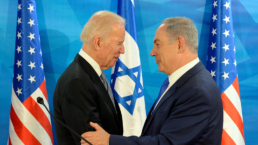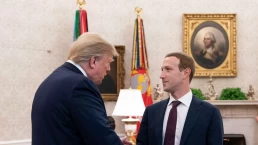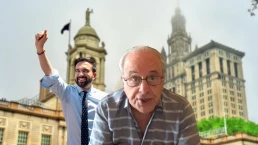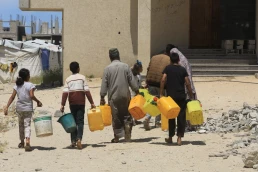The policy of separation and containment has been central to Israeli apartheid. It cannot be allowed to dictate Palestinians’ reality when the smoke clears.
by Michael Schaeffer Omer-Man, +972 Magazine
Israel’s policy of separation and containment is failing before our eyes. Horrifically. The disastrous idea that the Gaza Strip can be treated as separate from the rest of Palestine, and that Israeli military deterrence and technology is enough to keep violence to a sufficiently manageable level that doesn’t force any major political decisions, came tumbling down with the images of trucks full of Hamas fighters pouring across the Gaza separation fence on Oct. 7.
For the majority of the 21st century, Israel has pursued policies in Gaza that it believed would give it space to continue its apartheid and occupation regimes. By maintaining separation, encouraging political schisms, and doing everything it could to cut cultural, economic, and even family ties between Palestinians in the West Bank, Israel, and Gaza, it hoped to compartmentalize each population and treat the political and security challenges they each pose as discrete. By withdrawing its troops and settlers from Gaza, as it did in 2005, Israel believed it could stave off international pressure to do the same in the West Bank.
That era is over.

The Israeli government is already shaping the geopolitical reality that will emerge when the smoke eventually clears over Gaza. Even at this early stage, how it seeks to achieve its tangible objectives for this nascent war — ensuring that Hamas can no longer govern or pose a threat to Israel — will also forge the political reality for decades to come. We don’t know what that vision is yet, but there should be no doubt that as long as the current Israeli government is in charge, whatever shape it takes will be designed to entrench apartheid and inequality.
Recent Posts
“Arrest Now, Ask Questions Later”: Why Did L.A. ICE Agents Arrest and Jail U.S. Citizen Andrea Velez?
July 3, 2025
Take Action Now “They didn’t have vests that said ICE or anything. Their cars didn’t have license plates. … Just because of the color of our…
Trump’s Big, Beautiful Bill Is Naked Class War
July 3, 2025
Take Action Now Trump’s “Big, Beautiful Bill” trades tax cuts on millionaires for the dissolution of society.By Hamilton Nolan, In These Times…
Mayor Mamdani’s First Day, A Zero Hour Conversation With Richard Wolff
July 2, 2025
Take Action Now If elected, what would Mayor Mamdani do on his first day in City Hall? How would a democratic socialist govern as a big-city mayor?……
The U.S. Is Funding A Bloodbath At Gaza Aid Centers
July 2, 2025
Take Action Now The admin just gave $30M to GHF, the organization at the center of charges that Israel is weaponizing assistance and shooting at…




